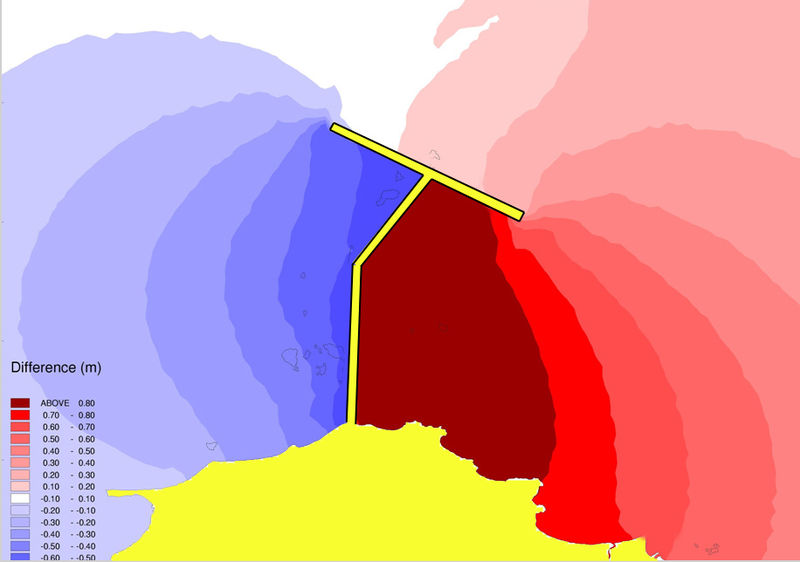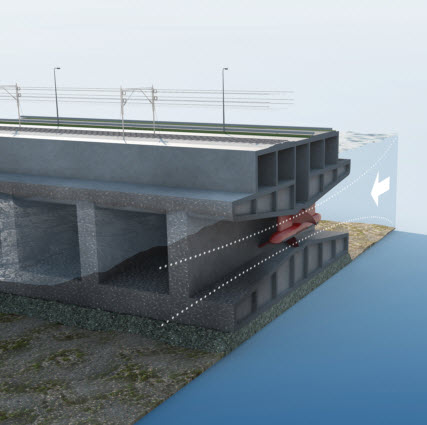The biggest proposed tidal energy project yet. In China, of course.
Capturing the energy in the tides is an expensive business. The 340 MW Swansea tidal lagoon project is going to cost the best part of a billion pounds although future UK tidal lagoons will probably be much cheaper. (This project is raising first stage development funding from individual investors. See tidallagoonswanseabay.com for further details).

Earlier in the week an even more ambitious scheme took another step forward. A Dutch/Chinese joint venture announced that its $40bn plan to capture the energy from tides off the coast of China had entered formal economic evaluation by the national government after several years of feasibility studies. If you thought you knew what tidal power plants looked like, think again. It isn’t a barrage across an estuary, nor a lagoon and even less like the Marine Current Turbines underwater windmill. It’s a giant embankment heading 40 km out into the sea completed at the far end by a sea wall running perpendicular to the main structure.
The intended location for this huge T is the Chinese coast between Xiamen and Shantou, pointing out towards Taiwan. The central idea is that this embankment will block the daily tides that run parallel to the coast, causing the water on one side of the wall to rise, and other side to fall. The physics are intuitive; if you put your foot into a stream, the water rises a little on the upstream side and you can see a slight depression in the area just downstream of your leg.
The difference in height, and the tidal flow itself, create the potential to generate electricity. 4,000 bidirectional turbines will capture the energy of the tide, generating a maximum of 15GW. (That’s about 40% of electricity demand on UK summer afternoons).
Such an enormous project seems completely fanciful. The demands for concrete and stone alone seem to dwarf even China’s capacity. However the idea has been successfully pushed by a well-regarded consortium of Dutch marine engineering companies who claim the challenges are surmountable.
Could this $40bn idea make financial sense? Let’s compare it with the proposed Hinkley nuclear power station. Hinkley is expected to cost £16bn for a two 1.6 GW reactors. That’s about £5bn or around $8bn, a GW. We need to inflate this slightly to reflect that nuclear reactors don’t work all the hours in the year – 90% uptime is a reasonable figure. So the cost of Hinkley comes out at around $8.8bn for an average gigawatt of electricity.
The Chinese tidal plant wouldn’t generate the full 15 GW all the time but power output would rise and fall during each tidal cycle. One estimate would be that the plant would average 6 GW over a year, including some allowance for maintenance. If the cost is $40bn, then the capital required per gigawatt of output is about $6.7 bn. This makes the tidal project about three quarters the price of new UK nuclear. And that’s before considering the fuel, operating and waste disposal costs of Hinkley. The nuclear plant may also take longer to build with the proponents saying that the embankment could be ready by 2020, several years before Hinkley is scheduled to open. All-in-all, the price of electricity from Hinkley – about £92.50 per megawatt hour – could perhaps be undercut by 30 or 40% percent by a tidal embankment.
Of course there are ecological issues with a barrier running 40 km out to sea. This is going to affect the marine environment, possibly severely. The obstacles to the project are still forbidding. However the Dutch consortium claims to be already looking elsewhere around the globe for its second site. As you’d expect, the focus is on the places where the strongest tides run along the coastline and water depths aren’t too great. The North Sea coast of the UK is one the list of the most favourable opportunities.
